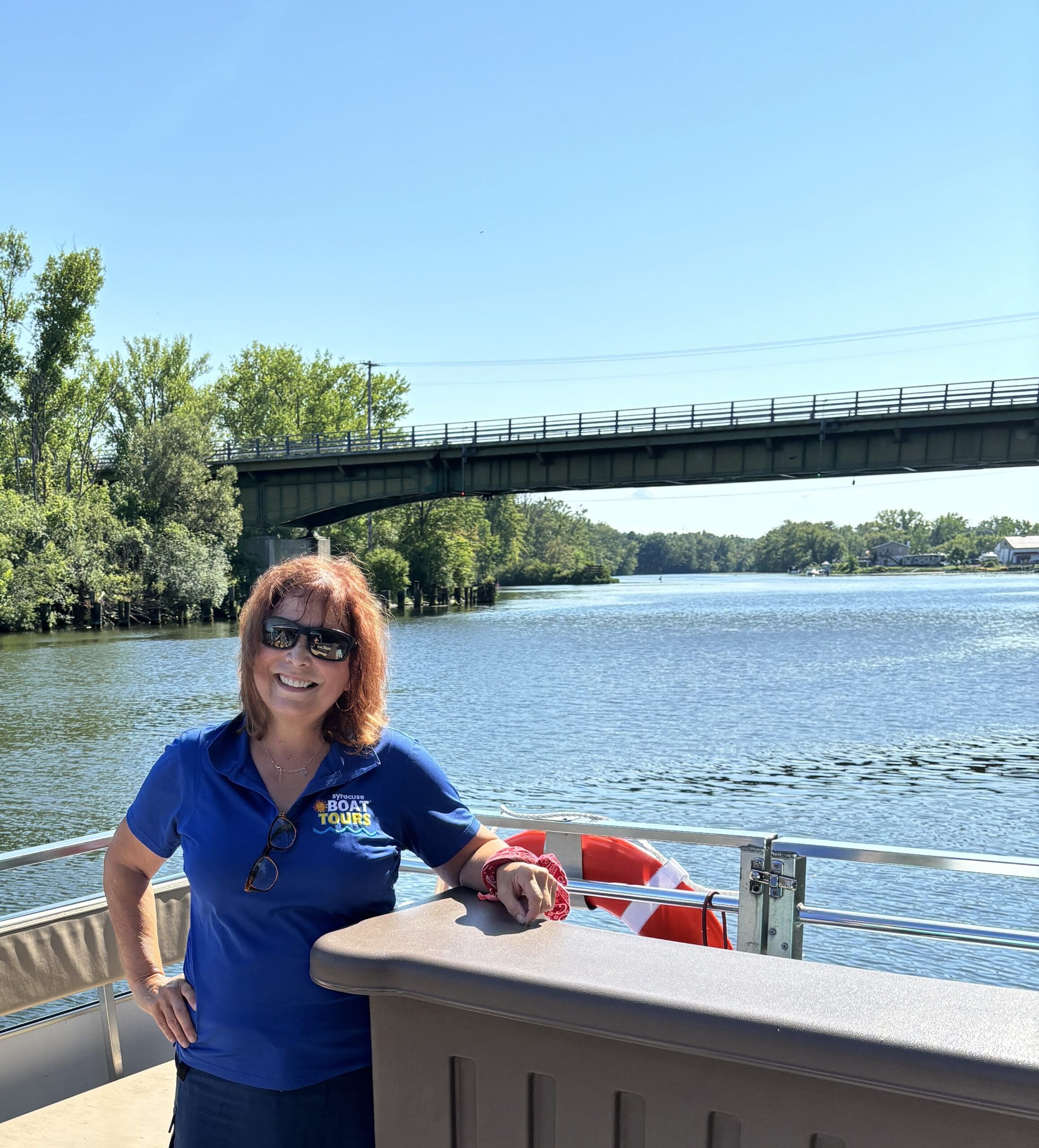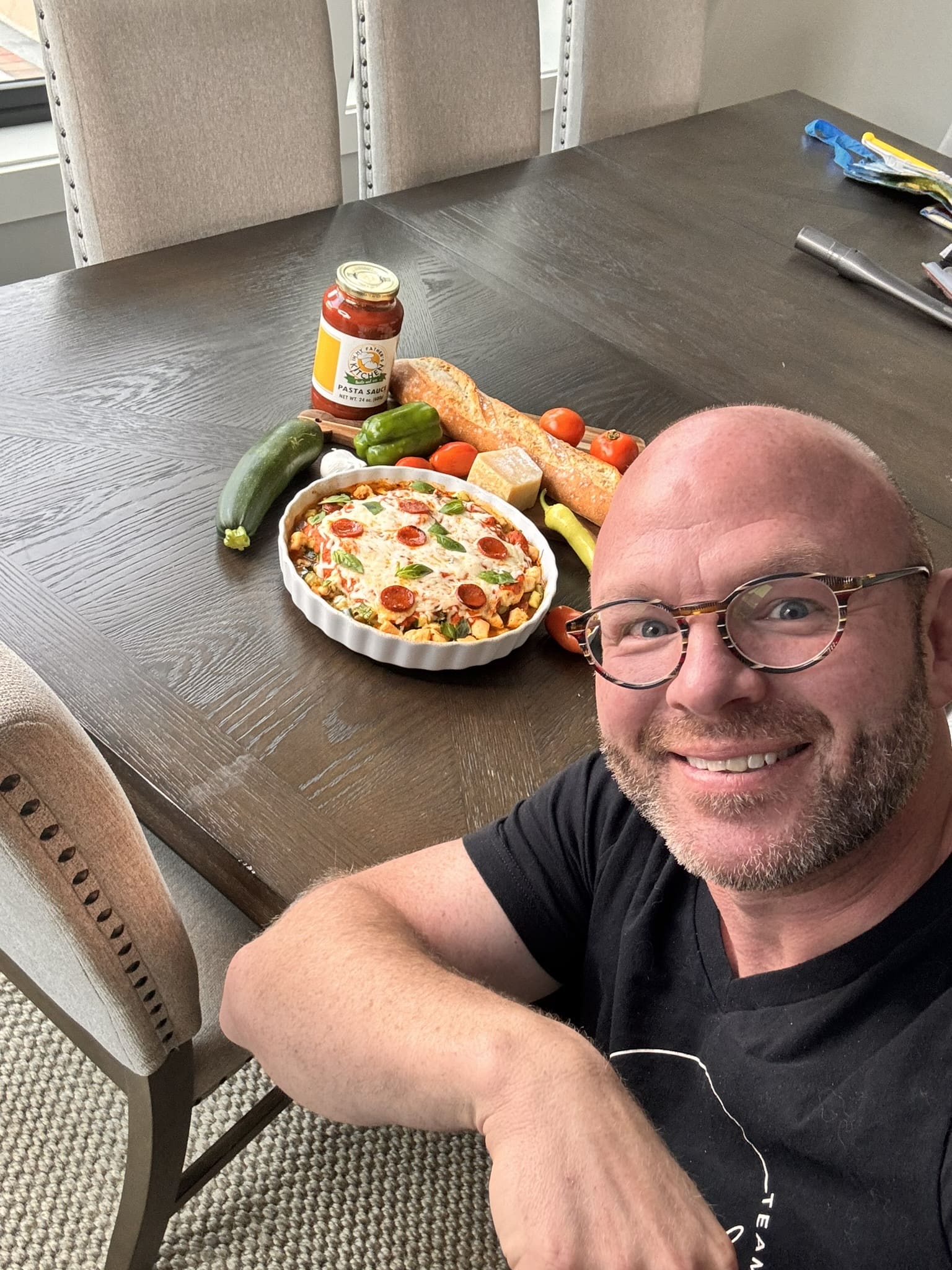The Original Man of Teal
By Kathryn Walsh | Photography by Mary Grace Johnson
If you’re ever wandering through the Great New York State Fair or cheering on the Syracuse Crunch, and a silver-haired man approaches you with a handful of teal ribbons, don’t be alarmed.
It’s just Gary Weeks, and he’s come to save your life.
It’s Gary’s mission to spread the word about the symptoms and risks of a disease he said doesn’t get enough public attention. An estimated 22,440 American women will receive a new diagnosis of ovarian cancer in 2017, according to the American Cancer Society. About 14,080 women will die.
Gary might seem like an unlikely champion of women’s reproductive health, but he has a powerful motivator. He and his wife, Frieda, are carrying on the work their daughter, Heather, never got to finish.
Heather was a talented dancer and great student. In 2008, after completing a “Sesame Street Live” tour and starting a job at the Ovarian Cancer Research Fund, she was diagnosed with colon cancer. She was 23 years old.
Although Heather didn’t have ovarian cancer, her work at the OCRF inspired her to get involved in the fight against the disease. She felt women weren’t getting the information needed to educate themselves about ovarian cancer and weren’t talking to their doctors about it, Gary said.
“She wanted to make the teal ribbon as recognizable as the pink ribbon,” he explained. “Make sure that all women — regardless of age, race, financial background — all women would know about the symptoms of ovarian cancer.”
Heather wanted to run an informational booth at the state fair.
“I remember Frieda saying, ‘Yeah, yeah, honey, you just get better and we’ll work it out and we’ll have a booth at the fair,’” Gary said. “She never made it, unfortunately.”
Heather passed away on November 14, 2008, just after her 24th birthday.
With a small sum of money that remained from a benefit for Heather, Gary and Frieda decided to carry out their daughter’s mission. Hope for Heather was born.
The next year, Gary used PVC pipes to build a booth. They sold rubber bracelets for $1 apiece and handed out informational materials. The Weekses set up the booth Heather had envisioned.
Getting people to take a break from state fair merriment to talk about ovarian cancer proved difficult. Approaching them with symptom cards didn’t work, Gary realized. He needed a better way to start the conversation. So he figured out how to make ribbons and enlisted volunteers from his church to make hundreds of them.
“Now when we go out, I lead with a ribbon,” he said. “That diffuses the fear and expectation that a woman’s going to have when a man approaches her.”
Today, Hope for Heather organizes three major annual events. There’s the state fair booth, an annual walk/run held in Minoa and a fashion show/brunch event.
The group has raised $800,000 for research and patient support. Gary and Frieda deliver gift baskets to local women fighting ovarian cancer. They’ve also organized two support groups: Sisters in Strength, open to any woman with cancer, and Positively BRCA, for women who have tested positive for BRCA gene mutations, a diagnosis that dramatically increases a woman’s likelihood of ovarian or breast cancer.
Other than the BRCA test, there’s no pre-screening test to detect ovarian cancer. The symptoms — which include bloating, pelvic or abdominal pain and change in appetite — can be hard to identify as abnormal. That’s why Hope for Heather’s mission is so essential, Gary said.
“Since there is no test for ovarian cancer and the symptoms are so vague, the disease is almost always misdiagnosed,” Gary said, explaining that if symptoms persist for more than two to three weeks, women should insist their medical team prove they don’t have ovarian cancer.
Gary spends a lot of time thinking and talking about cancer. As of this year, he’s a five-year survivor of bladder cancer.
“Five years is kind of a milestone,” he said.
He does take time for himself with music and trips to the Finger Lakes, but Hope for Heather and its mission are never far from his mind.
He’s involved in all elements of the group’s work, from filing taxes to decorating for events to, of course, handing out symptom cards.
“Even when he used to have his cancer treatments, he was visiting all the doctors’ offices in that building, giving them cards,” Frieda said. “I tried to go one day and they were like, ‘Where’s Gary?’”
Gary’s tenacity and dedication to women’s health have inspired other men to get involved in the fight against ovarian cancer. Every September, Hope for Heather tasks 30 male volunteers — the “Men of Teal” — with an important job: not to raise money, but to pass out cards and ribbons to women they come in contact with, educating them about ovarian cancer.
“We use guys from all walks of life,” Frieda said. “But Gary is our original Man of Teal.”
At the fair this year, be on the lookout for a guy in a teal shirt that says “Heather’s Dad.” He might be wearing a sandwich board and carrying symptom cards emblazoned with a picture of his beloved daughter. Rain or shine, he’ll be out there, and he’d love to talk. SWM
For more information about Hope for Heather, visit hopeforheather.org. The annual Teal Ribbon Run is slated for Saturday, September 23, in Minoa.





